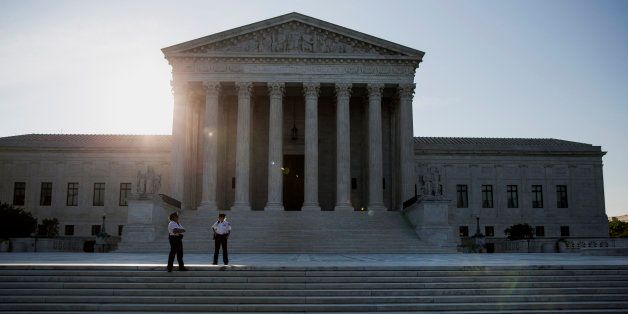
The recent anniversary of Roe v. Wade reminds us of the enormous legal progress made by women in the U.S. over the last five decades. Along with Brown v. Board of Education, which marked the beginning of the end of racial segregation, and Obergefell v. Hodges, which established marriage equality, it demonstrates the power of the US Supreme Court to shape American life. Sometimes the court interprets the law and the Constitution in ways that roll back progress too, as it did in Ledbetter v. Goodyear Tire and Rubber Company, where Lilly Ledbetter lost her right to sue her employer for sex discrimination, or in Citizens United, which equates money with political speech and allows unlimited political contributions.
These famous rulings aren't the beginning of the judicial process, however -- they are the end point. The Supreme Court sits atop a pyramid of trial and appeals courts, all in the hands of federal judges appointed for life by the president and approved by the Senate. The judges' decisions, at every level, shape how laws are viewed and enforced. Each step in the process -- the points chosen to appeal, the questions at oral argument, the content of briefs -- contributes to shape the final result.
Two cases regarding abortion and contraception now on the court's docket illustrate this point.
The first, Whole Women's Health v. Hellerstedt, will be heard by the Supreme Court on March 2. It will decide whether a Texas law places an "undue burden" on women seeking abortions, as well as on providers and abortion clinics. That phrase was set out in another important 1992 abortion case, Planned Parenthood v. Casey, where the Supreme Court ruled that laws governing abortion could not place an undue burden on a woman seeking an abortion -- but the meaning of the term was left vague and has not been defined since.
Whole Women's Health, like the vast majority of cases, started at the federal district court level. There a federal judge attempted to follow the standard set in Casey and decided that two provisions of the law were unconstitutional. The first required that any physician performing an abortion have admitting privileges at a hospital within 30 miles of where the abortion was performed. The second required that all abortion clinics comply with the standards set for ambulatory surgical centers, even including the width of corridors.
The US Court of Appeals for the 5th Circuit overturned the district court's decision, asserting that the clinic failed to show that the two provisions placed a substantial burden in the path of a woman seeking an abortion. The 5th circuit ruling was appealed to the Supreme Court, which could send the case back for further consideration or rule in favor of either party. A decision could wind up either strengthening or severely undermining the framework set up in Casey, with the practical impact of restoring or limiting access to abortion.
The second case, Zubik v. Burwell, will determine whether faith-based nonprofits can not only refuse, on religious grounds, to provide employees with contraceptive coverage otherwise required by the Affordable Care Act, but also refuse to sign a government form or provide a simple letter to the Department of Health and Human Services declaring their objection so that employees can access such coverage in other ways. Similar cases brought by different religious nonprofits across the country eventually resulted in eight circuits agreeing with the government's accommodation of the nonprofits' objections. But one circuit disagreed, and the Supreme Court chose to take up the controversy.
The importance of federal judges, from the trial courts to the Supreme Court, is apparent from the examples of Whole Women's Health and Zubik. Yet the Senate fell woefully behind in 2015, confirming the fewest number of judges in a single year since 1960. Only one court of appeals judge was confirmed -- the worst record since 1953, when none were confirmed. And in the meantime, vacancies rose from 43 to 70 by January 2016 and officially-designated "judicial emergencies" went up nearly 160 percent, from 12 to 31.
The slow pace of confirmations could prevent President Obama from filling the vacancies on these courts at all in the last year of his term, even as vacancies increase by the day as judges retire. Various justifications have been offered for the delays, even including the idea that no president should be able to act in the final year of his four-year term -- an assertion that is belied by history. In 2008 the Democratic Senate confirmed 22 judges in the last seven months of the George W. Bush administration, including 10 district court judges as late as September.
It is time for all of us to pressure the Senate to act. Our rights as Americans hang in the balance, protected or weakened by the actions of the federal bench. A bench whose membership is depleted due to foot-dragging in the Senate doesn't function as the Constitution intended, and it doesn't serve the American people.
Nancy K. Kaufman is the chief executive officer of the National Council of Jewish Women, a grassroots organization inspired by Jewish values that strives to advance social justice for women, children, and families.
